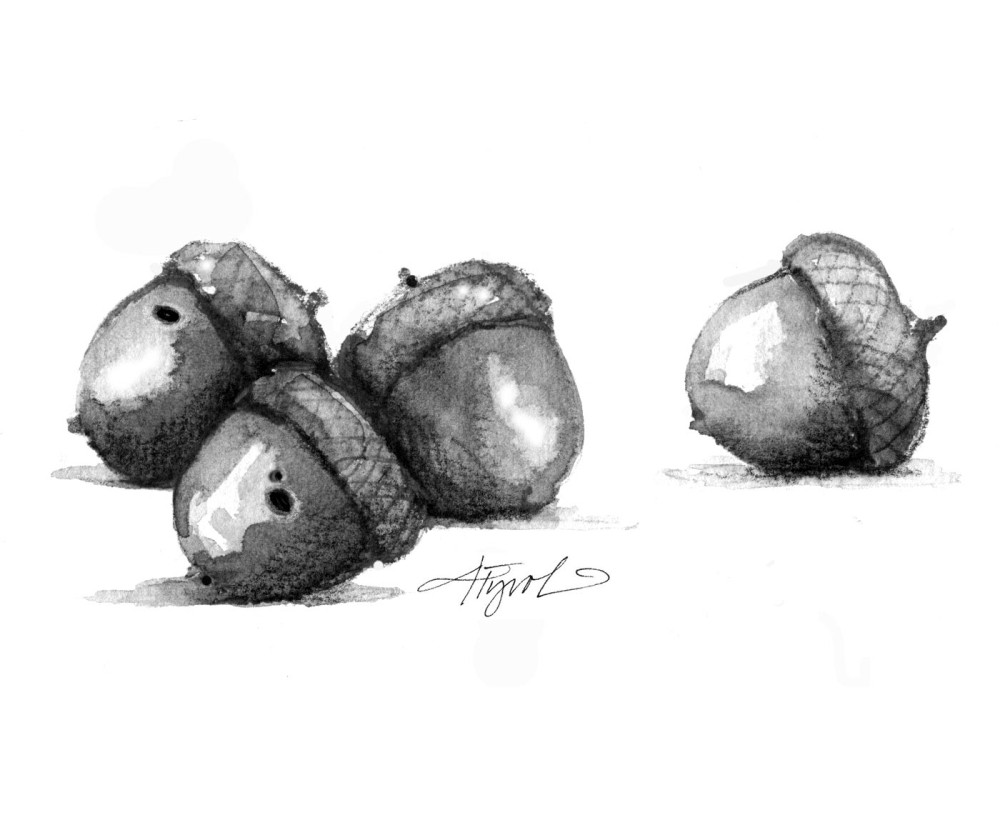
Rat-a-tat-tat. Showers of acorns hit the ground and tapped our heads as my husband and I hiked the Appalachian Trail. Thousands of acorns strewn across the path atop multi-colored leaves made for treacherous passage. We were hiking a portion of the trail through the Berkshires, and the tall, straight red oaks that grow in these hillside forests had produced a bumper crop of mast.
Oak trees have been around for millions of years, and there are numerous species growing throughout the world. In a Scientific American article published last summer, researchers reconstructed the “remarkable evolutionary success story” of oaks. They analyzed DNA from 56-million-year-old fossil pollen grains of an oak that grew in what is now Austria. During that time, the early Eocene epoch, land bridges intermittently connected North America to Eurasia, and oaks likely migrated between the two continents.
When global temperatures decreased 52 million years ago, oaks gradually migrated south, away from the land bridges, dividing North American from European oaks. As ancient climate change extirpated nearly all tropical forests from North America, oaks diversified into many species. Then, as continental glaciers began to recede 20,000 years ago, oaks rapidly migrated northward again. Blue jays are credited with helping oaks move north, as they often carry acorns a mile or more before caching them underground.
Northern red oaks (Querus rubra), the most prolific oak species in our region, are easy to identify, with their massive trunks, dark, ridged bark, and brown autumn leaves with pointed lobes that persist on trees into early winter. It takes two years for their round acorns to mature. Other oaks growing in our forests include the scrub oak (Quercus ilicifolia), a scraggly tree or shrub that grows on rocky summits and sand plains; the eastern white oak (Querus alba), which has scaly, light gray bark, leaves with rounded lobes, and oblong acorns; and chestnut oak (Querus prinus), which has scalloped, toothed leaves and grows on dry hilltops. Other oaks can be difficult to distinguish, especially since species often hybridize.
Red oaks are a keystone tree in our forests. Over 50 species of wildlife use northern red oak stands for breeding, feeding, or winter shelter. Large trees can produce 1,600 acorns in a single autumn. The acorns spend a winter on the ground before germination. High in fat and calories, acorns are a significant cold weather food source for squirrels, chipmunks, deer, bear, ruffed grouse, woodpeckers, and blue jays. Wild turkeys may consume over 200 acorns in a single feeding. As a result, most red oak acorns do not survive to sprout in spring unless they are buried by squirrels or blue jays and not recovered. Every two to ten years, however, northern red oaks produce a huge crop of mast, which overwhelms seed predators, leaving some acorns uneaten.
Oaks dominate many southern New England forests, although they are likely less prevalent than they were prior to European settlement. Native American land management techniques, including prescribed burning, favored oak regeneration. Oaks are well-adapted to periodic fires: older, larger trees with their thick bark and deep roots often survive, and young oaks will sprout vigorously from stumps. When fire is suppressed and there are no other disturbances, oaks have difficulty regenerating and can’t compete with more shade-tolerant trees such as maples.
Farther north, European settlement may have had the opposite effect, increasing oak populations. Ecologist Brett Engstrom has studied the distribution of red oak for three decades and has conducted aerial surveys of oak-pine forests. He explained that oaks grow well in abandoned farm fields, a common landscape feature of 20th century northern New England. Although red oak is a common species in some parts of Vermont, it is more dominant in New Hampshire and parts of Maine, he said, because of the warmer, coastal climate and sandy soils. When red oak does appear in northern Vermont, it tends to grow on steep, rocky, south-facing hillsides, especially along river valleys, and at lower elevations around major lakes.
Engstrom recalled a striking view from the air of Vermont’s Winooski River Valley one November: a dense swath of red oaks with brown leaves visible on south-facing slopes and none on north-facing slopes. He noted that blue jays prefer to bury acorns on south-facing slopes, as the snow melts first there in spring.
Engstrom predicts that oaks will become more abundant in northern New England as climate change brings warmer, drier conditions. In the future, beware of raining acorns!


Discussion *